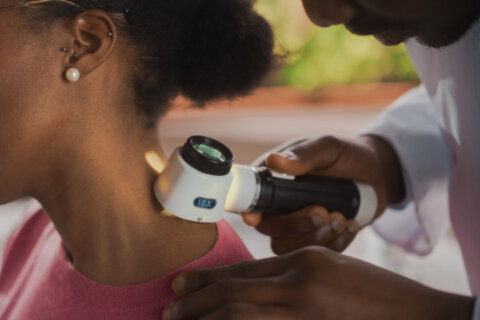Osteoporosis, which literally means “porous bones,” is a condition categorized by progressive bone loss. It’s a major health problem, affecting more than 44 million Americans. Though it’s not considered part of the “normal” aging process, osteoporosis is a degenerative condition that causes the bones to lose density and strength as we age, becoming very weak and increasing the risk for breaks or fractures.
These fractures caused by osteoporosis can occur in any bones in the body, such as the hips, legs, arms or wrists, but the most common site (almost twice as common as any other) is the vertebrae of the spine. Vertebral compression fractures occur when too much pressure is placed on a weakened vertebrae and it cracks and loses height. Since osteoporosis can develop and advance without any symptoms or pain (the condition has been referred to as the silent thief for this reason), it’s sometimes only discovered after a person has suffered his or her first spinal fracture.
[See: 10 Seemingly Innocent Symptoms You Shouldn’t Ignore.]
Fortunately, osteoporosis is preventable, and there are things patients can do to minimize some of the risk. Although certain risk factors cannot be controlled (such as hereditary factors or your bone frame), you can still take preventative action to protect your bone health and keep it as strong as possible. In recognition of May as Osteoporosis Awareness Month, it’s the perfect time to call extra attention to this disease. Understanding exactly what osteoporosis is, how it affects the spine and what you can do to decrease your risk will put you on the right path to a pain- and injury-free life.
When a vertebra weakened by osteoporosis “breaks” in the spine, it does so in a different way than an arm or leg would break. Instead of snapping and causing severe pain, a vertebra rather collapses and flattens. This can be accompanied by a dull ache or sharp pain, but it can also occur completely pain-free. In fact, about two thirds of vertebral compression fractures occur with no pain at all, which is why some people may never know they’ve suffered one. After having several of these fractures, the spine may begin to curve, and the person may notice he or she has lost height — often the first sign there’s a problem.
As more of these vertebrae begin to break, the spine will progressively become more curved, creating a hunched-over look and the inability to stand upright. This curvature of the spine is referred to as Kyphosis, and it can be the culprit of constant pain as the muscles, tendons and ligaments of the back become stretched past their usual range of motion. In severe cases, the spine may curve so much that the placement of internal organs is disrupted, making it extremely difficult for some sufferers to breathe normally, eat or walk. Though there’s a lot patients can do to protect themselves from getting to this point, it’s important to always remember that the damage caused by osteoporosis on the spine is irreversible, so the power here lies fully in prevention and putting forth the effort to be proactive in the care of your spine.
[See: What Your Doctors Wish You Knew.]
So what can someone do to make sure his or her spine is healthy and protected? As always with prevention, the earlier you start with your care, the better off you’ll be in the future.
Avoid cigarettes and tobacco and limit alcohol use, as these things have been proven as significant contributors to bone damage and loss.
Stay active with regular exercise (three to five times per week is ideal) to help restore and maintain bone strength. A combination of low-impact exercises like walking or riding a bike, plus resistance exercise like lifting weights, will help maintain healthy bone volume.
Be mindful of the foods you’re putting into your body to provide your bones with the nutrients they require to stay strong and healthy. Making adjustments to your nutrition isn’t always easy, but consuming a daily diet rich in fresh vegetables and fruits will provide the calcium and vitamin D required, and supplements can pick up the slack if needed.
[See: 10 Questions Doctors Wish Their Patients Would Ask.]
According to the National Osteoporosis Foundation, 1 in 4 men (25 percent) and 1 in 2 women (50 percent) will experience an osteoporosis-related fracture in their lifetime. Vertebral compression fractures usually result from a fall; however, people with osteoporosis have such weakened vertebrae that a fracture can ensue from something as simple as a sneeze or a cough. So taking all the preventative measures available can help prevent patients from reaching this point of disease. Yes, osteoporosis can be silent, but information and tools are available to you to help protect yourself. Now, it’s up to you to take advantage of it.
More from U.S. News
10 Ways to Avoid Winter Joint Pain
8 Lesser-Known Ways to Ruin Your Joints
Osteoarthritis and Activity: Walking It Out
Osteoporosis and Your Spine originally appeared on usnews.com







